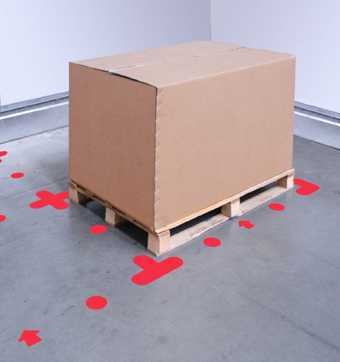Why Do Visual Management Boards Fail?
 By
Alana Graham
·
2 minute read
By
Alana Graham
·
2 minute read
Visual management boards are a core asset for all types of businesses, as they can be used for everything from daily meetings and team updates to individuals familiarising themselves with the current status of their department. As with any other communication tool, visual management boards can either greatly benefit day-to-day operations or fall short of their full potential – the key factor here is how they are used by your employees.
In this blog we’re looking at the main reasons why visual management boards fail and how to ensure that this never happens in your workplace.

Content:
1. Visual management isn't embedded within your company culture
2. Problems are seen as failures
3. Processes and actions are missing from the boards
4. Standard work hasn't been established
5. The Boards aren't adapted as the business evolves
Visual management isn’t embedded within your company culture
Placing visual management boards in strategic locations across your premises is only the first step, as your team members also need to be trained in how to use them properly. The board itself, though well designed, is merely a platform for communication – the actual information it’s intended to convey must of course be added and updated by your workers on a regular basis.
When the principles of visual management are effectively embedded within a company culture, updating these boards will become second nature. The result is VM boards that constantly reflect the status of a process, team or department, allowing everyone to stay on the same page and assimilate information extremely quickly.


Problems are seen as failures
Many companies consider problems to be failures and therefore embarrassing, which can often mean that they are omitted from the visual management boards. This is far removed from the methodology of continuous improvement, which revolves around identifying problems and approaching them as challenges that should be overcome.
Never forget that a problem only remains a problem if it’s hidden away and forgotten about. That’s why your visual management boards need to display the bad alongside the good, as only that way will they perform their role and enable your employees to remove constraints, bottlenecks and errors.

Processes and actions are missing from the boards
Visual management boards make key information immediately accessible and digestible. However, sometimes specific visual controls will be missing from a board entirely, which means that an area of production isn’t being properly monitored.
In order for your visual management boards to do their job, they need to include all of the fundamental metrics that are business-critical, such as quality of product, machine downtime, production turnover rate, safety levels, cost per unit, and so on.

Standard Work hasn’t been established
Standard work in a nutshell - every employee should have a clear understanding of the required standard for each process, as only then can variations and delays be removed from the production cycle.
Once your standards have been established, your visual management boards can accurately measure how each department is performing without any vagueness, confusion or discrepancies.


The boards aren’t adapted as the business evolves
Modern businesses, especially those in the manufacturing sector, can change rapidly. This can be due to a growing workforce, increased production, new regulations, product diversification, alterations to the supply chain, updated environmental policies, or a number of other factors that influence how the business operates.
In the same way that your staff need to be trained in new processes and ways of working, your visual management boards must adapt as well. Whether it’s a case of completely restructuring your VM boards or simply adding a new metric, this attention to detail will ensure that your teams can continue to deliver outstanding work.
.jpg?width=1024&height=683&name=Operations%20Performance%20Board%20(E).jpg)
Visual Management boards are a key factor to any successful business as it provides a way for the strategic running of day-to-day operations to run smoothly. There are a few reasons why they can fail however, as discussed above, but usually anything is better than nothing. Visual management boards run alongside 5S practices and continuous improvement, so it is important that you embrace the messy, and learn as you go along.
If you need a bespoke visual management board created for your factory, we can help you design anything you want. Get in touch with an expert here.




